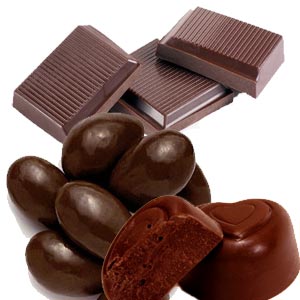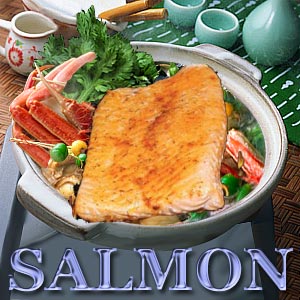Food Pyramid

The essential food groups are placed on the food pyramid so as to indicate their relative importance in a healthy diet. Healthy food habits go a long way in ensuring good health. Find out how high fiber food helps in warding off various colon diseases.
Food pyramid
The food pyramid is a diagrammatic representation of the food groups that go into constituting a good diet. It throws light on how much of
each food group should be partaken so as to stay healthy. The pyramidal shape indicates the proportion of each kind of food group in an ideal
diet. The constituents on the broader base of the pyramid should make up the bulk of your diet whereas the group on the tip should be eaten
in moderation.
The food pyramid is a study conducted by USDA on the American diet so as to draw an outline for a healthy food diet. Following the tenets of the food pyramid, as a broad dietary guideline will help you get the nutrients you need and at the same time maintain your health. This food pyramid is of considerable significance today since most Americans eat high fat diets that are laden with saturated fats.
The five food groups covered in the food pyramid are grains, vegetables, fruits, meat, diary products and fats, oils and sweets. No one food group is more important than the other. All are essential for good health.
The structure of the pyramid
The base of the food pyramid is constituted by breads, cereals, rice and pasta and food made of grains. The next stage of the pyramid is the
one that is plant-based. Vegetables and plants are needed for vitamins, minerals and fiber content. The meat group comes next. This is also complemented with dairy produce.
Prominent items of this group are milk, yogurt, cheese and meat, poultry, fish, eggs and nuts. This group is the main source of protein, calcium, iron and zinc. The tip of the pyramid consists of fats, oils and sweets. Foods that provide empty calories and hardly any nutrition such as sweet deserts, candies, soft drinks and margarine come in this category.
1. Breads, cereals, rice and pasta provide complex carbohydrates and starch that work as an important source of energy. Choosing bread, English muffins, rice and pasta scores over baked goods made of flour such as cakes, cookies and croissants since the latter are high in fats and sugar.
2. Include dark-green leafy vegetables and legumes several times a week since they are a rich source of anti-oxidants. The bottom of the pyramid
provides energy as well as B vitamins and some iron. Other than providing carbohydrates, vegetables also provide much-needed fiber.
3. The fruit group provides vital vitamins that keep you feeling fine and looking good. The Vitamin C group like oranges, strawberries and watermelons are a must-have. Eating fruits also adds to the fiber content in your diet.
4. Dairy produce is another group that is important for good health. But it should not be consumed in very high quantities. Milk, cheese and yogurt are excellent for your calcium requirements.
5. Meat, poultry, fish, eggs and nuts provide you with one of the most nutrients - proteins. They also provide iron and zinc. Broiling, roasting
or boiling meat is better than frying it. Choose lean meat that is lowest in fat.
6. Healthy food that is lower in fat and sugars involves many lifestyle changes to your diet. You need to go easy on butter, margarine and salad
dressings. Reducing sugar and candy can also help.
You need to balance various elements in your diet to suit your age, sex, size and lifestyle. Saturated fats raise blood cholesterol levels thereby
increasing the risk of heart diseases. Restricting saturated fats to about a third of the total fat intake can go a long way. Opting for lower-salt and no-salt-added versions of products such as canned soups, luncheon meats and cured meats is another healthy option.
High fiber food
High fiber diet promotes wavelike contractions that keep food moving through the intestine. This expands the walls of the colon to ease passage of
waste. Many diseases of the digestive track that plague modern day man are a result of eating food that is too refined and thereby lacking in
fiber. A diet rich in high fiber is known to treat elevated cholesterol, colon polyps and cancer of the colon.
Excessive consumption of some types of dietary fibers are known to affect the absorption of calcium, copper, iron, magnesium, selenium and zinc. A high fiber diet is particularly used for those suffering from Irritable Bowel Syndrome (IBS). Such a condition is characterized by altered bowel habits coupled with abdominal pain, cramps and spasms. Western cultures are increasingly seeing instances of colon cancer. What starts as colon
polyps then grows cancerous.
In cultures where grains are unprocessed and eaten with their fiber content, the instances of colon cancer are lower. This is attributed to the fact that carcinogens remain in contact with the colon wall for a longer time and in higher concentrations.
types of fiber
Insoluble fiber is found in most vegetables as also in wheat, rye, bran and other grains. Such fiber does not dissolve in water so they cannot
be used by intestinal colon bacteria. Soluble fiber dissolves in water and forms a gelatinous substance in the bowel. Such types of fiber are
commonly founding oatmeal, barley and legumes. Soluble fiber binds up cholesterol and allows it to be eliminated with the stool, thereby lowering
blood cholesterol by about 10%. A product that is labeled as 'high fiber' must contain more than 5g of fiber per serving.
Sources of fiber
- Fruits such as dried apricots, dates, prunes and raisins
- Vegetables like broccoli, dried peas and beans and corn
- Whole grain breads
- Brown rice
- Whole grain pasta
Top of the Page: Food Pyramid
Tags:#food pyramid #high fiber food

Velvet Cake
Dark Chocolate
Gourmet Chocolate
Gourmet Appetizer
Gourmet Cake
Gourmet Cheese
Gourmet Cookie
Gourmet Dessert
Gourmet Drinks

Sangria Recipe
Margarita Recipe
Champagne Punch
Wine Nutrition Facts
Wine Storage
Summer Cocktails
Rum Cocktail
Vodka Recipes
Martini Recipe
Eggnog Recipe
Coffee Filter
Gourmet Cooking

Food Articles
Cheesecake Recipe
Fondue Recipe
Cook Salmon
Parfait Recipe
Zucchini Bread
Pancake Recipe
Scampi Shrimp
Healthy Food
Caviar
Herbs And Spice
Recipe Sushi
Kebab
Smoothie Recipe
Top of the Page: Food Pyramid
Popularity Index: 100,909

